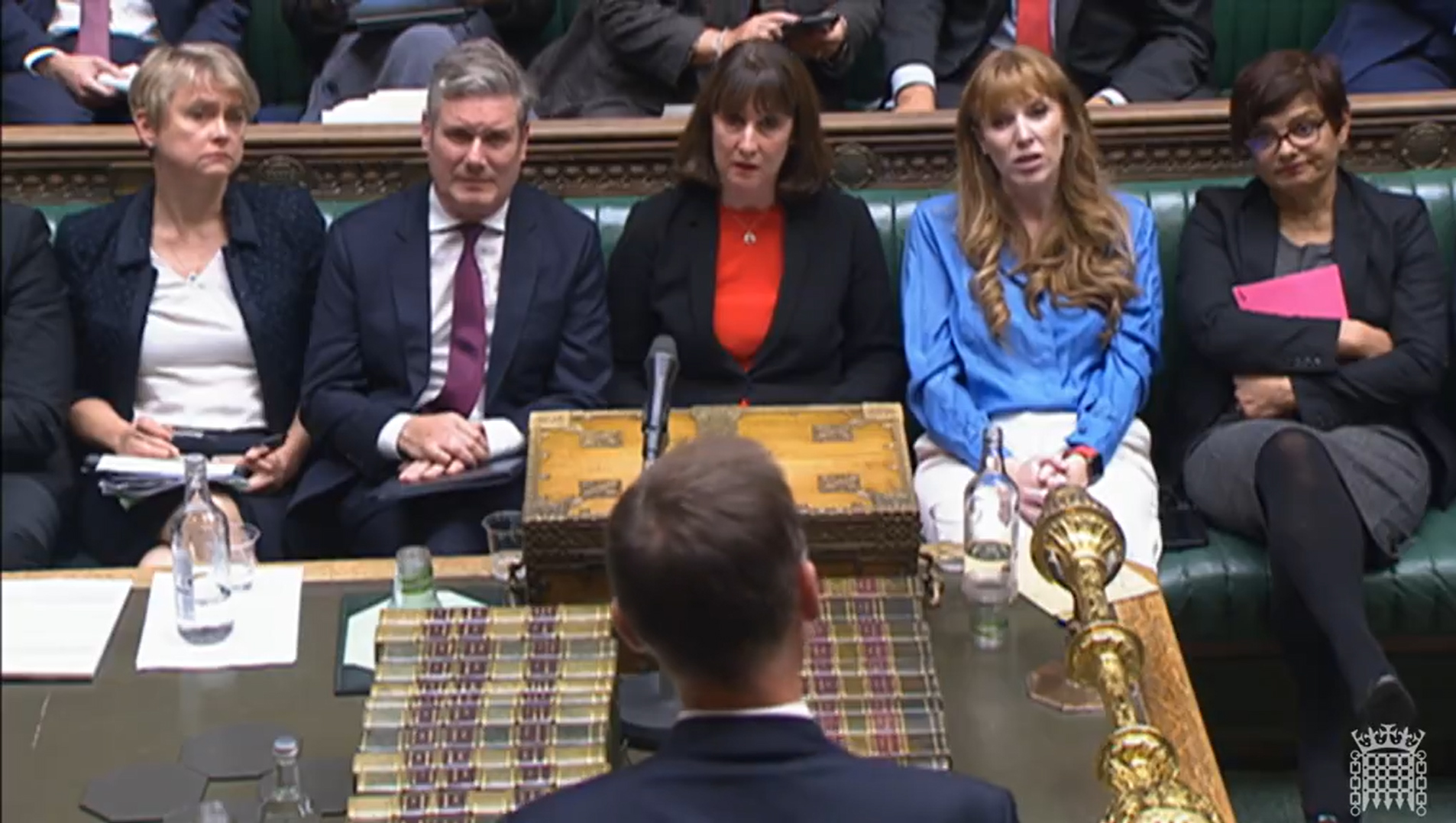“Party like it’s 2010”. That’s how shadow chancellor Rachel Reeves reacted to Jeremy Hunt’s new fiscal proposals announced on Thursday.
It was a stinging criticism.
Amounting to a fiscal rejig worth £55 billion, Reeves is right in her assessment: the Autumn Statement is the most austere economic plan announced since George Osborne’s “emergency budget”. It is a dramatic about-turn from the heady days of Trussonomics, with the new revenue-raising measures set to increase the tax burden to the highest level since WWII.
For right-wing rebels like Iain Duncan-Smith, John Redwood and Esther Mcvey, this must have been eye-watering.


The importance that the statement attached to tax rises is certainly curious — especially as they could have been substituted for further cuts (much more classically conservative). It also sets this fiscal plan apart from Osborne’s “emergency budget”, where the balance of tax rises to spending cuts was 23 per cent to 77 per cent. The balance in Hunt’s Autumn Statement is closer to 50/50.
Crudely, the statement presents a game of two halves: the first half being a more “compassionate” pre-election period where schools and the NHS get more money and the fiscal heavy lifting is done mainly by tax rises. The second half, which is scheduled to come after the next election, is when spending will see dramatic cuts.
The data tells a fascinating story.
According to Capital Economics, Jeremy Hunt has actually loosened fiscal policy in 2022/23 (by £3.8 billion) and in 2023/24 (by £0.3 billion). Only in a fourth Conservative term does austerity begin, with £10 billion of tightening in 2024/25, followed by £25 billion in 2025/6, and £41 billion in 2026/27.
As Hunt told the commons on Thursday: “The shadow Chancellor says that this is austerity 2.0, but … in this Parliament, even in the next two years, [spending] will rise 3 per cent a year. There is £11 billion for the NHS and schools”.
This “delay the pain” strategy is far from new to the treasury. But because it currently looks like the Conservative party will lose the next election, this approach is particularly noteworthy.
Ultimately, it will probably not be Hunt delivering the austerity — but it might be Rachel Reeves.
Reeves is an accomplished political performer and, on Thursday, she produced the most effective criticism we have seen come from a shadow chancellor for a very long time.
She hammered the Conservative party mercilessly for its failed Trussonomics experiment — and, importantly, her jokes landed. She called the Conservatives “pickpockets” and likened the party to the TV series Dallas, with its “old cast members returning as if nothing has happened … [when] everyone knows it is long past time that the series is cancelled”.
Reeves’s pointed criticism of the conservative party’s economic record reached a climax when she paraphrased the famous Ronald Reagan question. She asked: “Are me and my family better off with a Conservative government? … The answer is ‘no’”. Effective stuff.
However, it was significant that Reeves’ criticisms were focused on what the Conservatives had already done to wreck the economy, rather than the specifics of Hunt’s announcements.
Since 2019, Labour has deliberately not set out much detail in the way of what it would do in power. The party’s strategy has been to create a small target, offer few commitments and rely on the prime minister of the day getting bogged down in blue-on-blue scuffles and dug-in with Conservative dogma.
But while this worked so effectively under Johnson and Truss, things are now more problematic. Economic problems require economic solutions and, as Hunt told the commons yesterday: “[This] is massively more than she has ever promised!”.
Hunt’s “difficult decisions” have hence been postponed until after the next election when either (1) a Conservative government will be returned or (2) a Labour government will be forced to implement some nasty economic redresses.
This creates some serious policy dilemmas for Labour.
Will a Labour government keep Hunt’s proposals which have been so warmly welcomed by markets? Or could Starmer forge a new path chequered with potential market uneasiness? Might the party even push ahead with its radicalism and advocate a wealth tax?
No option is without difficulty.
If the risk-averse Starmer continues with Hunt’s fiscal plan he will face huge issues within his own party. Alternatively, if Starmer adopts a radical, high-spending platform, he risks losing the trust of the city which he has worked so hard to court. Such is Labour’s double-bind.
The Autumn Statement was strategically orientated to exploit traditional Conservative strengths and traditional Labour weaknesses. And, ultimately, Hunt’s statement may end up handcuffing Labour to harsh spending cuts — lest it be seen as irresponsible.
From Sunak’s perspective, as a politician whose appeal rests on the prudence of his economic management and willingness to make “difficult decisions”, the autumn statement appears to kick the can down the road.
Whoever is in charge from 2024 onwards will spend a lot of time clearing up the economic mess of the last government.

